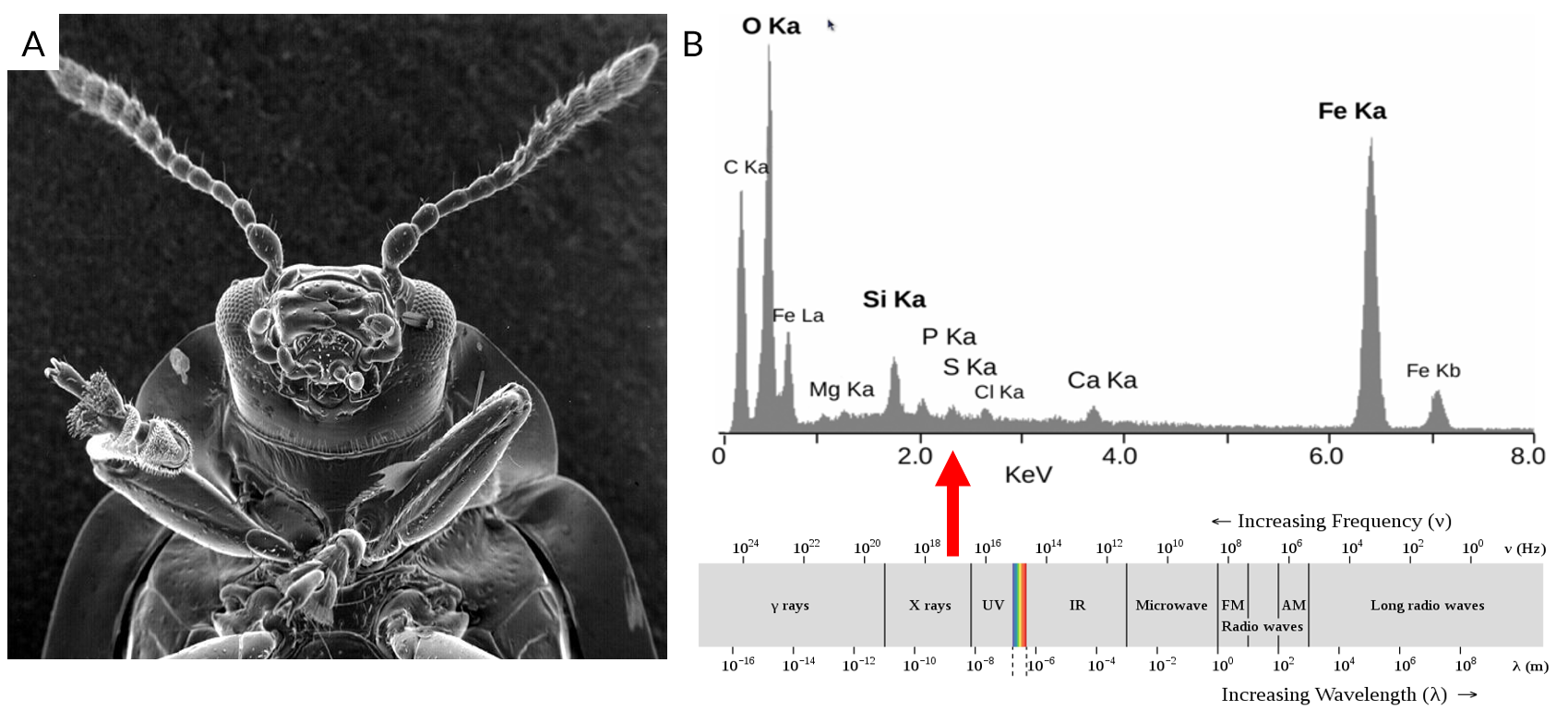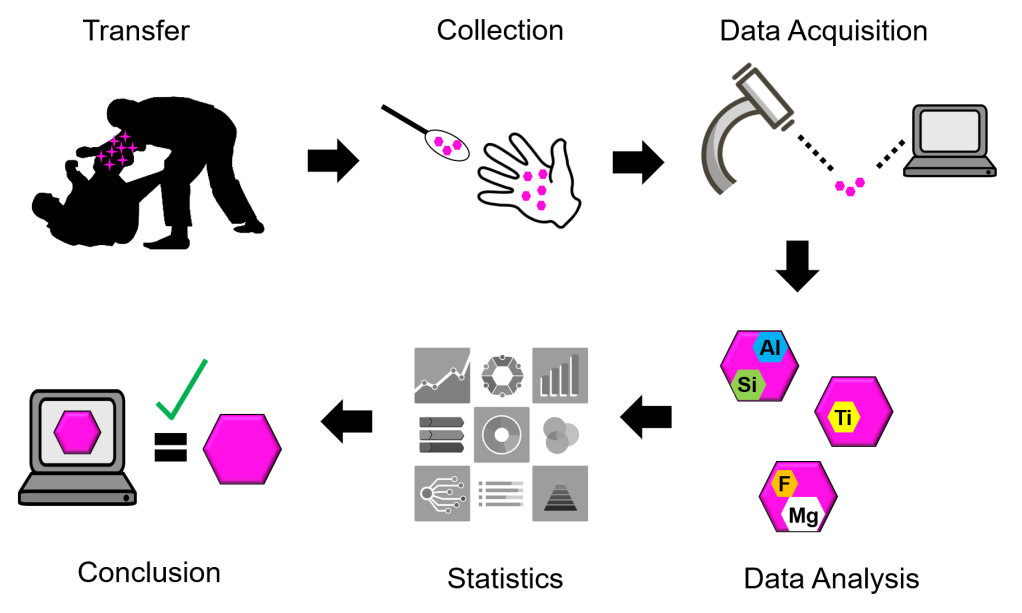Feature photo by Caleb+Kaci Carson from Pexels
The reality of a young woman raped at a college party is not as unfamiliar as we would like. The Association of American Universities reports that 26% of women and 7% of men experience sexual assault or rape during their undergraduate education through violence or incapacitation. Though this particular statistic is often disputed, sexual violence towards college age women is indisputable. As the CDC and others work to change our culture and stop sexual violence, forensic scientists develop methods to ensure that rapists and violent perpetrators are caught to prevent further harm. One kind of evidence that may improve this identification process relies not on DNA, but glitter, to connect perpetrators to their victims.
Dr. Candice Bridge and her graduate student Kandyss Najjar at the University of Central Florida investigated cosmetic glitter and body shimmer as trace evidence. Trace evidence is evidence too small to see with the naked eye, which makes it advantageous for investigators as perpetrators are unaware they leave behind the incriminating material. Additionally, glitter and shimmer particles are notorious for not coming off once deposited – if you’ve ever released a glitter bomb, you’ll know exactly how difficult it is to clean up afterward. But the ultimate utility of glitter/shimmer evidence would rely on distinguishing between different brands of the material, and even between glitter and shimmer itself. Bridge and Najjar then set out to provide this foundational evidence by examining the tiny, shimmering particles and see if there were characteristic differences in their appearance (such as shape & shape) and composition (chemical breakdown).
The instrument they selected for this foundational investigation was scanning electron microscopy coupled with energy dispersive X-ray spectroscopy (SEM/EDS). The SEM creates high-resolution images of the sample by converting excited electrons bouncing off the sample’s surface into an optical signal (Fig 1A). The EDS takes those same excited electrons and determines, as they lose energy and return to their non-excited state, what element they are by how much energy they lose in the X-ray part of the electromagnetic spectrum (Fig 1B). Combining these together, scientists create high-resolution images that show where each elements is located on a sample and how much of that element is present. This method is already known in forensics to identify particles from gunshot residue and car paint, but the authors aimed to expand its capabilities to glitter/shimmer analysis.

Najjar and Bridge sampled 36 and 40 glitter and shimmer in a variety of colors (ranging from gold to fuchsia) and textures (matte, satin finish, and normal). Using their SEM/EDS, they obtained high-quality images of the hexagonal and mapped the elemental breakdown onto the surface. Then after identifying the elemental composition of these sparkling cosmetics, they applied a statistical method called principal component analysis (PCA) to sort the various cosmetics into categories (Fig 2). This method is not limited by two components but can sort multiple variables at once, leading to distinct groups with the maximum amount of separation between categories based on their foremost components. The greater the distance between groups, the less likely the program will misidentify a sample into a wrong category.
Najjar and Bridge’s method sorted their glitter samples by the presence and amount of titanium, iron, silicon, aluminum, and sulfur, while the PCA sorted their shimmers based on their potassium, magnesium, iron, titanium, and fluorine content. This led to seven different groups for glitter and four groups for shimmer, which their system could distinguish between with high accuracy. The algorithm could even tell the difference between glitters and shimmers of the same color, such as Glitterex’s Fire Red and Just Pigment’s Ruby Red, which would be difficult with visual examination or potentially spectroscopy.

However, it’s not enough to distinguish between samples to match reference glitter or shimmer samples with those found at a crime scene. Statistics and rigorous sampling methods must back up these claims. Therefore, the authors thoroughly evaluated several factors that could decrease the reliability of their glitter/shimmer identification method, including: how different individual shimmers/glitters are from each other, the chance of a false positive (i.e. identifying a glitter/shimmer as another sample) and the chance of false negatives (i.e. how likely the system will not identify the glitter/shimmer at all). Both potential pitfalls proved to have an incredibly low chance with their data interpretation system, as reflected by 94-100% accuracy with three separates statistical evaluation methods.
This work may lead to another critical database hosted by the National Center for Forensic Science, such as the National Ignitable Liquids and Sexual Lubricants Databases, that serve investigators around the world. They have already amassed 76 cosmetic samples from their current study. Forensic techs in the field could then perform SEM/EDS analysis on their glitter evidence, upload the results to the database, and obtain rigorously validated matches to known brands. The next steps, in addition to expanding their sample repository, is to partner with crime labs to examine and present this evidence in court, allowing a Frye or Daubert ruling to be applied. Once legally validated, glitter and shimmer analysis may prove essential to link assailants and their victims when DNA evidence is unclear.
| Title | SEM-EDS analysis and characterization of glitter and shimmer cosmetic particles |
| Authors | Kandyss Najjar and Candice Bridge |
| Journal | Forensic Science International |
| Year | 2020 |
| Link | https://www.sciencedirect.com/science/article/pii/S0379073820303893 |
